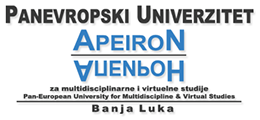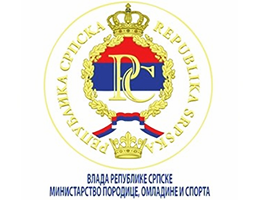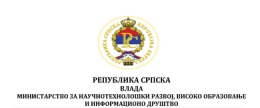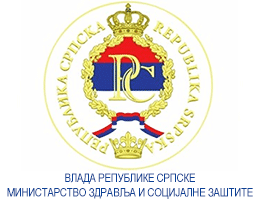Motor Abilities Performance After Physical Education Program Versus For Handball Training Pre-Adolescent Children
Volume 1, Issue 1 (2011)
Volume 1, Issue 1 (2011)
Motor Abilities Performance After Physical Education Program Versus For Handball Training Pre-Adolescent Children
Abstract:
The performance on motor abilities after six month of mainstream physical education program or a specific handball training was examined in participants (handball n=51; physical education, n=70) who engaged in 3 sessions per week (60 min./session) including ball-handling exercises, horizontal and vertical jump shots, fast-breaks, and several defensive skills. Statistically significant differences were observed between the two groups on velocity, agility, and flexibility with differences in favouring the handball group. Handball training could significantly improve preadolescents΄ physical performance.
Keywords:
physical education program, handball training, pre-adolescent children
Full Text:
References:
- BAR-OR, O. (1989) Trainability of the pre-pubertal child. The Physician and Sports Medicine, 17, 62-82.
- BIRER, B., & LEVINE, R. (1987) Performance parameters in children and adolescent athletes. Sport Medicine, 4, 211 - 227.
- BLOOMFIELD, J., BLANKSBY, A., ACKLAND, R., & ELLIOT, C. (1985) The anatomical and physiological characteristics of preadolescent swimmers, tennis players and non competitors. Australian Journal of Science and Medicine in Sport, 40, 19-23.
- BURTON, A., GREER, N., & WIESE- BJORNSTAL, D. (1992) Changes in overhand throwing patterns as function of ball size. Pediatric Exercise Science, 4, 50-67.
- CARDINALE, M. (2004) Handball performance: physiological considerations & practical approach for training metabolic aspects. European Handball Federation Periodical, 1, 3-12.
- EUROFIT. (1986) European test of physical fitness. Thessaloniki: SALTO.
- FARROW, D., YOUNG, W., & BRUCE, L. (2005) The development of a test of reactive agility for netball: a new methodology. Journal of Science and Medicine in Sport, 8, 52 - 60.
- GARL, T., RING, L., & BOMBA, B. (1988) Evaluating basketball conditioning. N.S.C.A, Journal, 10, 46-47.
- HOARE, D. (2000) Predicting success in junior elite basketball players the contribution of anthropometric and physiological attributes. Journal of Science and Medicine in Sport, 3, 391-405.
- HUFF, J. (1972) Auditory and visual perception of rhythm by performers skilled in selected motor activities. Research Quarterly, 43, 197-207.
- LIEMOHN, W. (1983) Rhythmicity and motor skill. Perceptual and Motor Skills, 57, 327-331.
- MacKENZIE, T. L., ALCARAZ, J., & SALLIS, J. F. (1994) Assessing children’s liking for activity units in an elementary physical education curriculum. Journal of Teaching in Physical Education, 13, 206-215.
- MILLS, J., TAUNTON, J., & MILLS, W. (2005) The effect of a-10-week training regimen on lumbo-pelvis stability and athletic performance in female athletes: randomized-controlled trial. Physical Therapy in Sport, 6, 60-66.
- MOLLER, M., OBERG, B., & GILLGUIST, J. (1985) Stretching exercise and soccer: Effect of stretching on range of motion in the lower extremity in connection with soccer training. International Journal Sports Medicine, 6, 50-52.
- MOSCAI, L. (2002) Analyzing and evaluating the 5th men’s European Handball Championship. European Handball Federation Periodical, 1, 3-12.
- PAPAVASILIOU, Η. (2003) Evaluating Greek high-school students’ physical condition by means of the International Physical Performance Test Profile for boys and girls from 9-17 years. Physical Education and Sports, 49, 7-25.
- PAPPAS, A., MORGAN, W., SCHULZ, L., & DIANA, R. (1995) Wrist kinematic during pitching: preliminary report. The American Journal of Sports Medicine, 23, 312-315.
- PIENAAR, A., & VAN DER WALT (1988) The influence of participation in a gymnastics program on selected anthropometrical variables of six to nine-year old girls. Journal for Research in Sport Physical Education and Recreation, 11, 39-47.
- RAMADAN, J., & BYRD R. (1987) Physical characteristics of elite soccer players. Journal of Sports Medicine and Physical Fitness, 27, 424-428.
- ROBERTSON, S., & ELLIOT, D. (1996) Specificity of learning and dynamic balance. Research Quarterly for Exercise and Sport, 67, 69-75.
- SECO, R. (1998) Men’s Junior European Championship/Austria. European Handball Federation Periodical, 2, 35-46
- TABORSKY, F. (2001) Game performance in handball. European Handball Federation Periodical, 2, 23-26.
- ZAKAS, Α., & GELADAS, N. (2002) Handball match effect on the flexibility of junior handball players. Journal Human Movement Studies, 43, 321-330.






